Demonstration Teams and Pilots for 2018

Demonstration Teams and Pilots for 2018 |
 |
|
|||
    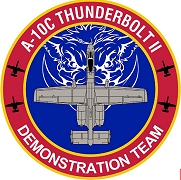 The Air Combat Command A-10 Thunderbolt II Demonstration Flight Team at Davis-Monthan AFB, AZ team performs precision aerial maneuvers to demonstrate the unique capabilities by one of the Air Force's best close air support of ground forces. It has excellent maneuverability at low air speeds and altitude, and has highly accurate weapons-delivery platforms. The team works with the Air Force Heritage flight exhibiting the professional qualities the Air Force develops in the people who fly, maintain and support these aircraft.The Fairchild Republic A-10 Thunderbolt II is a twin-engine jet aircraft developed by Fairchild-Republic in the early 1970s. It is the only United States Air Force production aircraft designed solely for close air support, including attacking tanks, armored vehicles, and other ground targets. The A-10 was designed around the 30 mm GAU-8 Avenger rotary cannon that is its primary armament and the heaviest-ever automatic cannon mounted on an aircraft. The A-10's airframe was designed for durability, with measures such as titanium armor to protect the cockpit and aircraft systems, enabling it to absorb a significant amount of damage and continue flying. The A-10's official name comes from the Republic P-47 Thunderbolt of World War II, but is more commonly known by its nickname "Warthog" or "Hog". Its secondary mission is to provide airborne forward air control, directing other aircraft in attacks on ground targets.i Max takeoff weight: 50,000 lb. Max speed: 439 mph.
|
|||
|
|||
    The United States Army Special Operations Command Parachute Demonstration Team, nicknamed the "Black Daggers", comes to us from Fort Bragg, N.C. Their mission is to perform live aerial demonstrations in support of Army special operations community relations and recruiting. Composed of volunteers from throughout Army special operations, the Black Daggers have diverse backgrounds and are skilled in various military specialties including Special Forces, Rangers, civil affairs, psychological operations, and signal and support. With an average age of 33 and an average number of free-fall jumps at 560, the team represents the professionalism and dedication of Army special operations forces.
|
|||
|
|||
    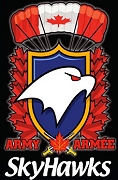 The Canadian Armed Forces Parachute Team, The SkyHawks, returns again to Salute. For over 40 years they have represented Canada and the Canadian Armed Forces to over 75 million spectators worldwide under their signature Canadian flag parachutes. Bringing their parachutes in close proximity to build formations in the sky, the team puts on a spectacular show. Performing these aerobatic parachute formations requires a high level of skill and courage; and is known as Canopy Relative Work. Supported by the Canadian Army, the SkyHawks are based out of Trenton, Ontario, at the Canadian Army Advanced Warfare Centre.
|
|||
|
|||
  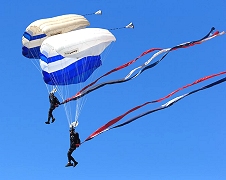 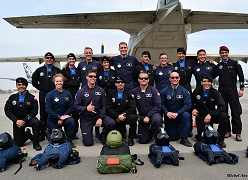 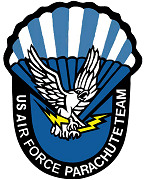 The Wings of Blue (sometimes known as PTWOBs for "Parachute Team – Wings of Blue"), is the parachuting unit at the United States Air Force Academy, near Colorado Springs, Colorado. The team operates as the 98th Flying Training Squadron, 306th Flying Training Group, Air Education and Training Command. Over the last several decades, the Wings of Blue has been one of the outstanding parachute units in the United States. Since 1967, cadets have dominated national intercollegiate parachuting, winning 21 national championships. They perform about 50 demonstrations each year, and have shown off their skills at the BCS National Championship, Orange Bowl, Copper Bowl, Fiesta Bowl, and Pro Bowl and most Air Force Falcons football games. Their stated mission is to: "Develop airmen through flight in its purest form".
|
|||
|
|||
 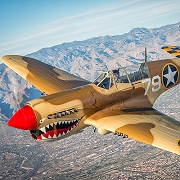 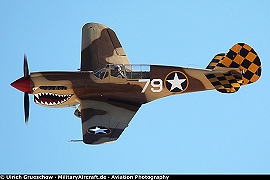 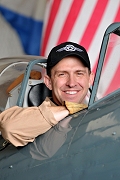 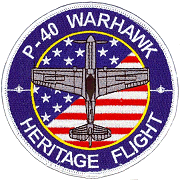 The Curtiss P-40 anchored America’s aerial arsenal during the early years of WWII. Recognizable thanks to the fearsome fangs painted around the air intake, the fighter was especially valuable in the China-Burma-India Theater where it was made famous by Gen. Claire Lee Chennault’s “Fighting Tigers.” Flying the P-40 in our Heritage Flights will be Stuart Milson. Stuart took his first ride in a de Havilland Beaver in Canada at the age of 10 and received his license at the age of 17. He has over 10,000 hours and is qualified to fly a EMB 120, CL-65, DC-3, MD-11, B-25, B-17, A-26, DHC-4 Caribou, T-28, F4U Corsair, F4F Wildcat, F6F Hellcat, F8F Bearcat, G-TBM, P-40, P-47, P-51, AD-1 SkyRaider, and Hawker Sea Fury. Stuart is a Certified Fight Instructor, (CFII, MEI), Flight Engineer, and an A&P Mechanic. He is the Chief Pilot for the Cavanaugh Flight Museum in Addison and is currently employed with FedEx as a pilot on the MD-11. Stuart and his wife live in Midlothian, Texas with their three boys. Max weight: 8,810lbs. Max speed: 360mph. Power: 1,150 hp.
|
|||
|
|||
    Trojan Phlyers brings us two North American T28B Trojan aircraft to perform formation and solo aerobatics to salute our veterans and the men and women who continue to serve and protect. These aviation professionals are also dedicated to preserving the rich history of the North American Aviation Company’s T28 Trojan. Trojan Phlyers come to us from Mid-Way Regional (KJWY), just south of downtown Dallas and southeast of downtown Fort Worth, TX and are flown by Chip Lamb and John Sledge. Max weight: 8,500lbs. Max speed: 343mph. Power: 1,425 hp.
|
|||
|
|||
     WWII de Havilland Vampire Jet Areobatic Demo returns for 2017. The de Havilland D.H. 100 was a single engine fighter aircraft by the British manufacturer de Havilland Aircraft Company. It became combat ready at the end of World War II. It was the first jet aircraft in British service to be powered by a single turbojet engine. First Flown in 1943 it was the 1st Single Engine Jet Fighter, 1st Jet Fighter to Land on an Aircraft Carrier and 1st Jet to Cross the Atlantic. This rare bird will perform aerobatic maneuvers with smoke piloted by Jerry Conley. Max weight: 12,390lbs. Maximum speed: 548 mph.
|
|||
|
|||
    The Lockheed T-33 Shooting Star (or T-Bird) returns to Salute in 2017. The T-33 was produced by Lockheed and made its first flight in 1948. The T-33 was developed from the Lockheed P-80/F-80 then designated T-33A. It was used by the U.S. Navy initially as TO-2 then TV-2, and after 1962, T-33B. In 2013 Canadian-built examples are still in-service with the Bolivian Air Force. This T-33 is flown by Gregory "Wired" Colyer. Max weight: 15,100lbs. Max speed: 600mph. Power: 5,400 lbf.
|
|||
|
|||
    The Douglas AD-1 Skyraider is an American single-seat attack aircraft that saw service between the late 1940s and early 1980s. The Skyraider had a remarkably long and successful career; it became a piston-powered, propeller-driven anachronism in the jet age, and was nicknamed "Spad", after the French World War I fighter. It was too late for WWII but saw action in the Korean and Vietnam wars. This AD-1 from Huntington IN is flown by John Shuttleworth. Wingspan: 50ft. Max weight: 25,000lbs. Max speed: 322mph. Power: 2,700hp.
|
|||
|
|||
 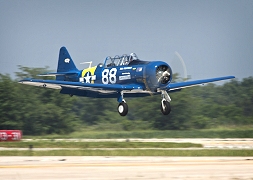   "Radial Velocity" is a WWII T-6 trainer that has raced the past five years in the fastest motor sport on earth - The Reno Air Races. Owned and flown by John Lohmar of St. Louis, MO, based at Creve Coeur Airport, Radial Velocity missed 2nd place by only 1 second in the 2013 Reno Races. The North American T-6 Texan was a single-engine advanced trainer aircraft used to train pilots of the United States Army Air Forces, United States Navy, Royal Air Force and other air forces of the British Commonwealth during World War II and into the 1950s. The T-6 is known by a variety of designations depending on the model and operating air force. The USAAC designated it as the AT-6, the United States Navy the SNJ, and British Commonwealth air forces, the Harvard, the name it is best known by outside of the United States. It remains a popular warbird aircraft. Wingspan: 42 ft. Loaded weight: 5,617 lb. Max speed: 222 mph.
|
|||
|
|||
   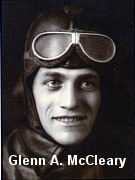 Salute To Veterans is proud to host the "Jenny" for the third year. This JN-4 Jenny is based in Bowling Green, KY and was built by filmmaker Dorian Walker who obtained the design specs for an original 1917 airplane. It is operated by Friends of Jenny (FOJ), a non-profit organization formed to educate the public about the first mass-produced airplane. Besides being used a as WWI flight trainer, the Jenny carried the first regularly-scheduled air mail. In fact, this FOJ plane bears the same tail number (38262) as the plane that carried the first U.S. Mail from Washington, D.C. to New York on May 15, 1918. FOJ consists of an all-volunteer group of aviators and aviation aficionados who work diligently to maintain and fly this unique aircraft to bring to life the educational significance of the Curtiss JN-4 Jenny biplane. Glenn A. McCleary, Mary McCleary Posner's father, set an altitude record of 10,200 feet in the Jenny without oxygen on Armistice Day, November 11, 1918, at Post Field, Ft. Sill, Oklahoma. Wingspan: 43.5 ft. Loaded weight: 1,920 lb. Max speed: 75 mph. |
|||
|
|||
    The Famous WWI "Flying Circus" of the Kansas City Dawn Patrol returns for their 25th year. They will be displaying several planes in their menagerie, including one that was used in filming the Movie "Amelia". Some of these aircraft will fly at the beginning of the airshow (weather permitting).
|
|||
|
|||
   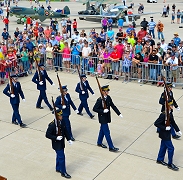  They are the ONLY Tri-Service Drill Team with Army, Navy and Air Force cadets and midshipmen as members. They will be performing their amazing and intricate routines both days of the Airshow during the Salute to the Nation Ceremony at Show Central!
|
|||
| Memorial Day Weekend Salute to Veterans Corporation - Non-Profit Organization |